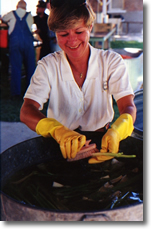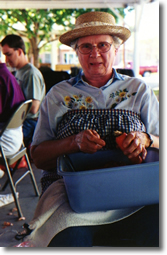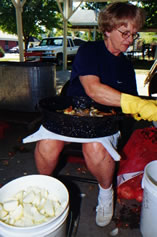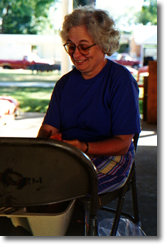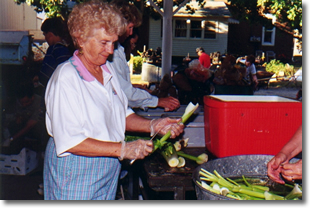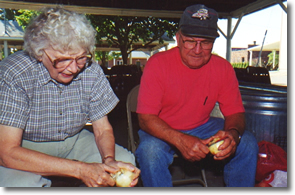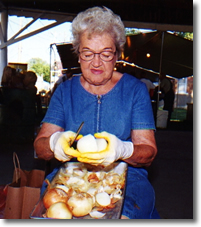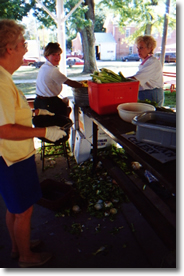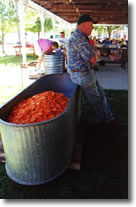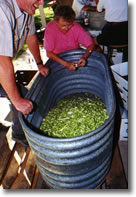 ARENZVILLE, IL | HOME OF THE WORLD'S BEST BURGOO
ARENZVILLE, IL | HOME OF THE WORLD'S BEST BURGOO |
An account of the 1998 Burgoo in Arenzville, Illinois, which celebrates an annual festival which produces 1,800 gallons of soup and sells it all during a two-day celebration with friends and neighbors. |
|||||||||||||||||||||||||||
|
by Molly Daniel Though I have attended the Arenzville Burgoo dozens of times so far in my life, only recently did I realize how little I know about the traditions surrounding this event in my own hometown. As a child, I saw the Burgoo as the last chance for some summer fun with my friends, and I could hardly wait for the school day to end so we could race uptown to the carnival rides. As a young adult, I was only mildly intrigued with the festival and its traditions, content to have my one bowl of soup a year and marvel at the endurance of the men in the long white aprons as they stood for hours stirring the boiling kettles. Somehow I managed to escape being drafted for duty on one of the many Burgoo committees, and I always steered clear of the all-night soup preparations because Ron Fricke had me convinced that, during the wee hours, the cooks tossed in various unappetizing ingredients, such as toads, stray cats and other critters. Like countless other sons and daughters of the community, I grew up and moved away after high school. My job and the many miles to Arenzville kept me from returning for the Burgoo. Despite the distance, each year at Burgoo time I would wonder how it was all going -- was the soup good this year? Did they have a large crowd? Does Coach Kemp still work in the hamburger tent? Does anyone still bring homemade gooseberry pie to sell? Does Gerald Beard still invent just enough categories for the Pet Parade so that every kid manages to win a prize? Now that my husband and I live in Illinois again, I've had the chance to attend the Burgoo for the last couple years, and I am seeing it through fresh eyes. Or maybe I just never really knew that much about it in the first place. For instance, I had never even seen how burgoo was made, and if you had asked me, I couldn't even tell you the first step. So this year, I decided I would go to Arenzville a day early and pay attention to all that is done to make the Burgoo happen. Part I - Cleaning and ChoppingArmed with my trusty 35 mm camera and several rolls of film, I set out on Thursday morning across central Illinois, driving through the flat prairie. I'm surprised to see that the cornfields are turning golden brown and losing the last streaks of green in their stalks. A few miles further west and I encounter the first cornpicker in the fields, spewing dust and chaff from the back and gobbling up corn rows in the front. It occurs to me that the Burgoo will mean double duty for many farmers who are eager to get their crops in but have obligated themselves to chores in town, too. By mid-afternoon, I am gliding down Beeley Hill and rolling into town. Mom is waiting for me at home, and after we refresh ourselves with a glass of iced tea, she gathers up her potato peeler and a couple of paring knives, and we drive to the town park. The vegetable preparation committee is already hard at work cleaning, peeling and chopping vegetables for 1,800 gallons of burgoo.
|
|||||||||||||||||||||||||||



